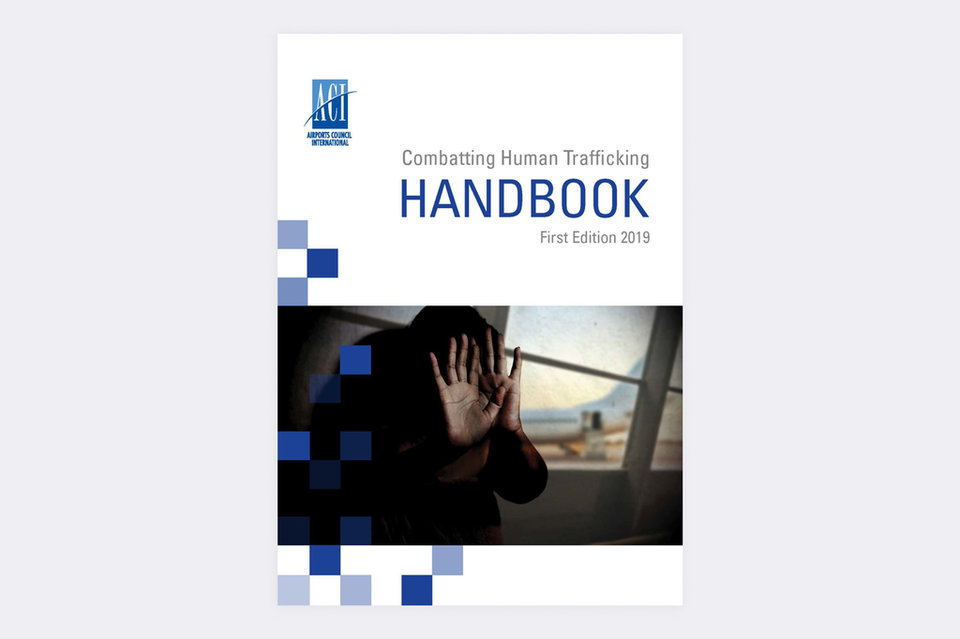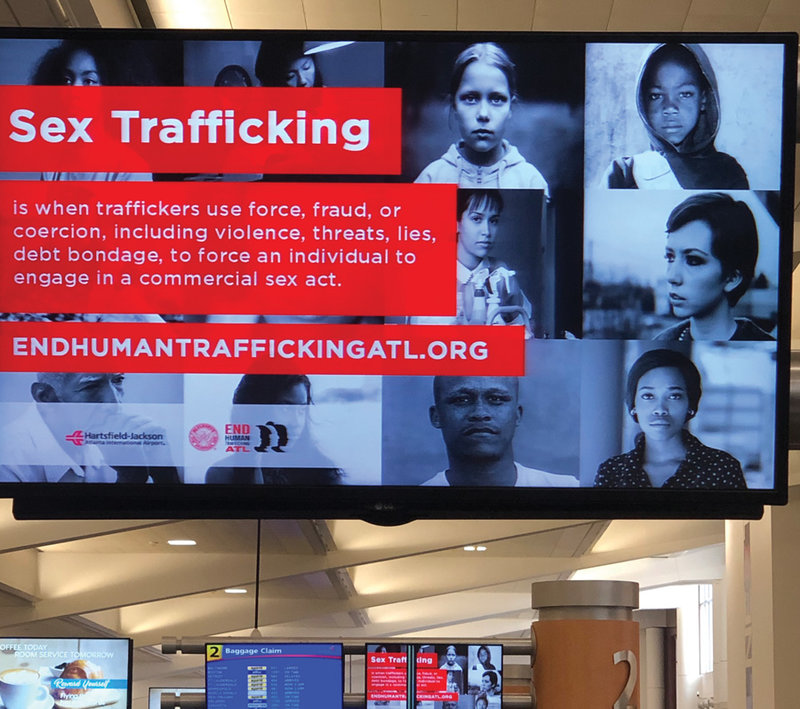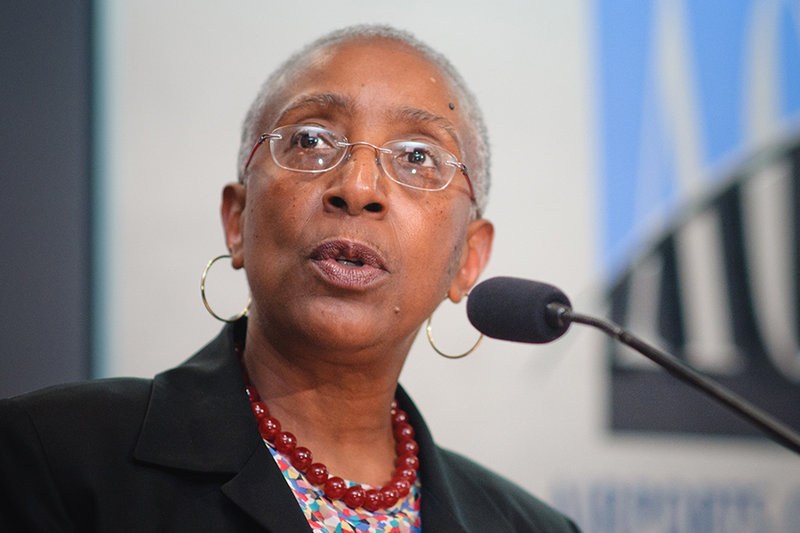Social Focus
Speaking out: the first Human Trafficking Handbook for airports
To assist airports in the fight against human trafficking, the ACI has launched its first Combatting Human Trafficking Handbook which draws on the experiences of airports affected and provides guidance on how to act. Frances Marcellin takes a closer look to find out some of the key lessons
In 2014, when Nadia Murad was 19, ISIS attacked her village in Iraq. Hundreds were killed (including 600 men, some from her family) and she was forced into sex slavery with other Yazidi women and girls.
After three months of abuse she escaped to a refugee camp. Since then she has become a global voice for the Yazidi people and campaigned against human trafficking, of which 70% of the victims are women.
Murad became a UN Goodwill Ambassador for the Dignity of Survivors of Human Trafficking and won the Nobel Peace Prize in 2018.
"While we are far from ending impunity, international and national efforts to effectively implement the Protocol against Trafficking in Persons have made a difference,” stated United Nations Office on Drugs and Crime (UNODC) Executive Director Yury Fedotov, when the Global Report on Trafficking in Persons 2018 was released earlier this year.
Spreading knowledge and awareness is an important factor in fighting against human trafficking. While there are around 40 million modern slaves in the world, UNODC reports that the global detection rates for human trafficking have increased along with the number of convictions.
Air travel is one of the key ways traffickers move victims around, but with the right strategy in place airports can play a key role in raising public awareness, identifying trafficking situations and helping victims travelling through the airport. It is also possible for airports to put pressure on governments in countries where action needs to be taken.
To optimise a global response from all stakeholders in aviation, in March 2019 the Airports Council International (ACI) released the first “Combatting Human Trafficking Handbook”, a free resource designed to help airports comprehensively deal with modern slavery.
Caption.
Image courtesy of
How can airports combat human trafficking?
The break through handbook outlines eight areas where airports can take an active role. These compriseairport staff training; public awareness; engaging the local community; strategically-placing information to help victims; engaging with agencies (such as law enforcement and immigration); communicating with airlines; supply chain responsibility; and co-ordinating with advocacy groups.

Front cover of the first Combatting Human Trafficking Handbook. Image courtesy of ACI
To ensure that all airport staff, whether they are a full-time employee or contractor, are clear are about how to identify and report trafficking, the report advises airports to put a trafficking policy in place. This should include vision and mission statements, as well as responsibilities and reporting policies.
“The policy should set out the responsibility for all staff members to report suspected cases of trafficking and provide clear instructions on how and when to report,” states the report. “It is important to emphasise confidentiality.”
The handbook outlines eight areas where airports can take an active role
Identifying potential victims
The International Labour Organisation (ILO) estimates that 1 in 4 victims of modern slavery are children. The handbook offers additional ways for staff to identify trafficked children, such as if they are travelling unaccompanied by adults or with people who are not relatives.
The free resource also provides an overview of the various ways employees could identify a trafficking victim through visual or behavioural indicators. These include appearance (such as injury or dirty clothes); behaviour (if the person is intimidated or nervous); unusual interaction with travelling companions (if they don’t speak the same language or appear to be under instruction); and travel circumstances (for example, if it is a last-minute flight or they don’t know their home or work address).

A Campaign at Hartsfield Jackson Airport, which also ran the Freedom Expressions project, featuring more than 80 pieces of artwork from students and artists. Image courtesy of ACI
As well as underlining the importance of a reporting policy, the handbook offers some advice on how an airport staff member could approach a potential trafficking victim, if in line with the airport’s policy.
Making contact in a washroom or striking up a conversation if it is safe to do so are suggested as ways to find out if the person needs help. Yet caution is also advised, and it warns not to take on the role of a law enforcement officer.
An example of how to train staff is given by Heathrow Airport, which provides a 60-minute ‘Modern Slavery’ session, including presentations, videos, trainer-led talks and open discussions. It also recommends e-learning as a way for staff to work through advisory material on their own.
The free resource provides an overview of the various ways employees could identify a trafficking victim
Boosting public awareness
Public awareness campaigns in and out of the airport are recommended as a powerful way to engage the community and increase detection. Dynamic signage (such as digital displays or videos at departure gates), movable signage (which can be strategically placed), and social media are the three most effective.
Outside of the airport, press conferences or media campaigns that harness influential people in the community are also recommended as ways to increase awareness.
In 2016, the Houston Airport System, which operates George Bush Intercontinental Airport (IAH) and William P Hobby Airport (HOU), launched an anti-human trafficking awareness programme. The team worked with customs and border protection and created a campaign that included altering public perceptions (such as via a ‘Watch for Traffick’ multimedia campaign) and improving links to support for victims, before sharing it with other municipalities to maximise the spread of awareness.
Houston Airport System, which handles around 55 million passengers a year, was praised by NGO Polaris, which called the initiative the “first comprehensive, municipal-level response to combating human trafficking”.

One of the most visually-striking campaigns was by Toronto Crime Stoppers, of a silenced woman gagged by airline baggage tickets - these adverts are still shown at airports. Image courtesy of ACI
For Houston Airport System chief external affairs officer Saba Abashawl, promoting awareness is the most important step in the fight against human trafficking. “The more we are aware of the signs, of the impact, and what we can do to help recognise and stop human trafficking, the more weapons we have in our arsenal to combat it,” she stated in the handbook.
“Proactively preparing the people on the front lines, the dedicated people working at airports and for airlines, to be an active part of the efforts to identify and take action to stop human trafficking is an invaluable asset in reaching this important goal,” she added. “They can serve as vigilant eyes and ears and can help raise the public’s awareness.”
Another example of how an airport has raised awareness comes from Hartsfield-Jackson Atlanta International Airport, in partnership with the International Human Trafficking Institute (IHTI).
Over a three-month period in 2015, it ran the Freedom Expressions project, which exhibited more than 80 pieces of artwork from students and artists. This not only attracted more than 100,000 visitors, but the project was broadcast in more than 20 countries by CNN International as it included an opening reception by the CNN Freedom Project.
One of the most visually-striking campaigns was by Toronto Crime Stoppers, of a silenced woman gagged by airline baggage tickets. These adverts are still shown at airports and offer a website link where the public can follow up for more information.
Press conferences or media campaigns that harness influential people are recommended as ways to increase awareness
Increasing victim detection in all airports
The real-life examples, guidelines and campaign case studies offered in the handbook have been compiled to help airports combat trafficking and enhance support for passengers who are victims of these crimes.

ACI World Director General Angela Gittens. Image courtesy of ACI
“The safety and security of passengers remains all airports’ number one priority and the airport community is determined to work with border authorities and our partners across the world to help put a stop to the appalling crime of human trafficking,” stresses ACI World Director General Angela Gittens.
“Many of our airport members are already demonstrating their commitment to this effort and this handbook provides useful information and advice to strengthen our combined efforts in awareness, training and reporting.”
The airport community
is determined to work to help put a stop to the appalling crime of
human trafficking